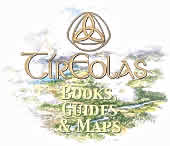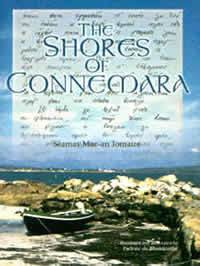
"Mac an Iomaire's is an original and clear story,
a commentary on the social life of a people co-existing with nature and the
cycles of the sea."
"This is one of the most interesting and captivating books about nature ever written in Ireland. Here is a joyful supplement to the solemnities of regular field guides.
A major cultural text and also one of the most enjoyable and revelatory books in the whole of Irish writing about nature.
The rich illustration includes original etchings of fish
by Sabine Springer that rank with the best in marine illustration. The whole
book is a labour of love."
First published in Irish in 1938 as Cladaí Chonamara and not previously available in English, The Shores of Connemara is both a naturalist's guide to the seashore and coastal waters of Connemara, Co. Galway and an account of the life of the people who lived there in the late nineteenth and early twentieth century. Séamas Mac an Iomaire was born in 1891 near Carna in Connemara and wrote about the way of life he knew and the environment in which he grew up. He describes the flora and fauna of the seashore, the living people made from them and the crafts involved, such as kelp making, boat building and fishing. With this English edition a new audience can discover this classic of Irish social and natural history.
About the author:
Séamas Mac an Iomaire was born in 1891 on Maínis, an island off the coast of Connemara. As a boy he learned all the traditional skills of the way of life on the seashore - sailing, fishing, cutting seaweed and similar activities. He also absorbed the heritage of songs, storytelling and folklore of this Irish speaking region. As a youth he was involved with the Irish Republican movement and he was arrested and briefly imprisoned, as were his father and one of his brothers. He began writing while in his teens and his essays and stories were published regularly in the Irish language press. He started to teach Irish through the Gaelic League and worked as a teacher until he emigrated to the USA in 1926. He at first taught Irish for the New York Gaelic Society then worked for a railway company. He worked mostly underground, spending months on end without seeing the light of day and it was then that he contracted TB and was hospitalised.
His friend Seosamh Daibhéid encouraged him to continue writing while in hospital and he began to record what later became Cladaí Chonamara. Seamas wrote (in Irish) "I was in bed when I wrote most of the pieces as I was not allowed to get up. The doctor told me there was no harm in writing three or four pages a day, that is, after having already spent six months on the flat of my back not being allowed stir. I often wrote eight pages a day, although the doctor doesn't know that yet. I got so immersed in such desirable memories that I would forget altogether that I was in a foreign country lying on the flat of my back with TB."
After his recovery Séamas continued to work for the railroad company until his retirement in 1960. He visited his native home from time to time and died in 1967.
From the introduction:
Cladaí Chonamara is quite unique in many respects. It is, to some extent, a guide to the seashore and coastal waters for anyone interested in natural history, although it cannot be regarded as a guide in the strict sense of a key to identification of marine organisms. It is also a commentary on the social and economic life of the coastal dwellers of Maínis in the late nineteenth and early twentieth century.
The author was not a naturalist in the sense of that word as used at the turn of the century in Ireland; he was not a member of an educated, urban middle class, predominantly Protestant of settler stock, who were active in field clubs and natural history societies. The acquisition of his deep knowledge of the natural history of the environment in which he was reared was incidental to a way of life he and the other members of his community practised. The transcribing of this knowledge and experience to paper was what made Séamas Mac an Iomaire different to the other members of the community. Cladaí Chonamara is thus unique in that it was written not by a scientist or an academic but by a practitioner.
2000, 192pp, 220 x 160mm,
16 colour plates, 12 newly commissioned etchings by Sabine Springer
ISBN 1 873821 14 X,
Euro 15.00 (excl.postage)
BUY THIS BOOK | BACK TO CATALOGUE
